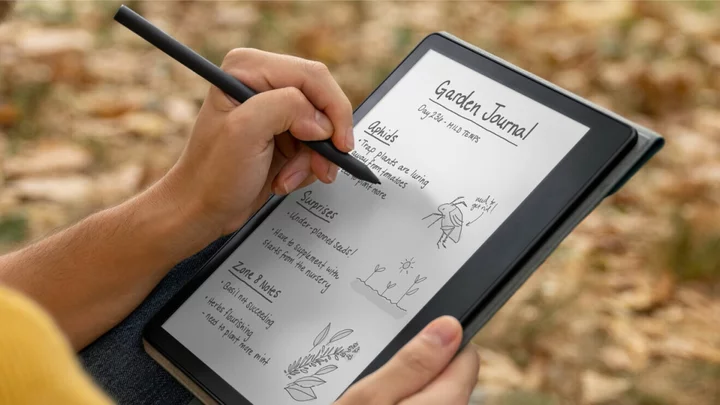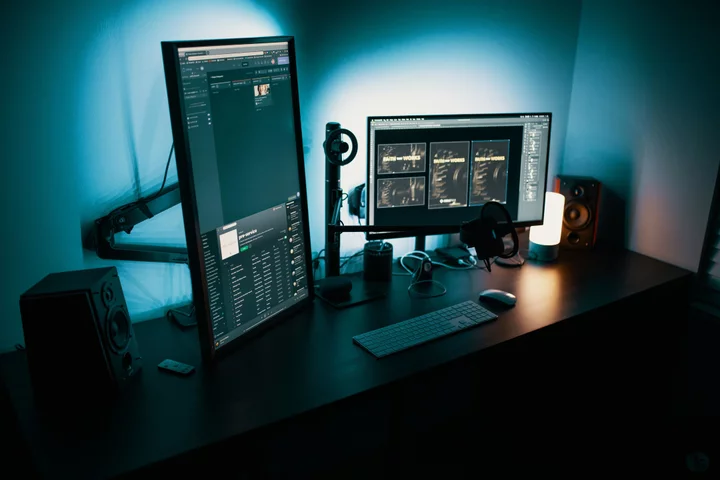
Trump’s Truth Social warns company may be forced to shut down amid huge losses
Truth Social’s parent company lost almost $23m (£18.7m) in the first half of this year alone, according to a new securities filing that raises concerns about its “ability to continue”. The filing released on Monday marks the first time any financial details about Donald Trump’s social media platform have been shared publicly, according to The Hollywood Reporter. Truth Social was launched in February last year after Mr Trump was banned from most social networks in the aftermath of the 6 January 2021 Capitol riots. The former US president – who announced his candidacy for the 2024 elections in November last year – has since returned to X (formerly known as Twitter), but says Truth Social is still his primary social media platform and that he won’t post anywhere else until six hours after he sends a “Truth”. Having Mr Trump on board has not translated into revenue for the platform’s parent company Trump Media & Technology Group (TMTG), however. Over the first half of 2023 it has lost $23m while bringing in only $2.3m in net sales, the filing showed. This has raised doubts about the viability of the company and its social media startup, according to the filing. “TMTG’s independent registered public accounting firm has indicated that TMTG’s financial condition raises substantial doubt as to its ability to continue as a going concern,” the company noted in the filing. The company said the “management has substantial doubt that TMTG will have sufficient funds to meet its liabilities as they fall due, including liabilities related to promissory notes previously issued by TMTG”. The remarks were made in its assessment of business till the end of December last year and as of 30 June 2023. Concerns have also been raised over Digital World Acquisition Corporation (DWAC), a Special Purpose Acquisition Company (SPAC), that had some years ago announced plans to merge with TMTG. An SPAC is a shell corporation which raises money by listing itself on a stock exchange with the aim of using the funds for a merger with a different and usually more well-known entity. The filing said DWAC has “until 8 September 2024 to consummate a business combination”. It raised concerns that both TMTG and DWAC may not survive unless this merger is completed. “It is uncertain that Digital World will be able to consummate a business combination by this time. If a business combination is not consummated by this date, there will be a mandatory liquidation and subsequent dissolution of Digital World,” the filing said. “TMTG believes that it may be difficult to raise additional funds through traditional financing sources in the absence of material progress toward completing its merger with Digital World,” the filing further said. “A number of companies that had licence agreements with President Trump have failed. There can be no assurances that TMTG will not also fail,” the filing said. TMTG also cited a number of risks to its business in the new filing, including a dedicated section titled “Risks related to our chairman, president Donald J Trump”. The section lists his ongoing legal hurdles. “TMTG’s success depends in part on the popularity of its brand and the reputation and popularity of its chairman, president Donald J Trump,” the filing said. “The value of TMTG’s brand may diminish if the popularity of President Trump were to suffer. Adverse reactions to publicity relating to President Trump, or the loss of his services, could adversely affect TMTG’s revenues, results of operations and its ability to maintain or generate a consumer base.” Read More Return of original Fortnite map causes record traffic on Virgin Media O2 network Elon Musk unveils new sarcasm-loving AI chatbot for premium X subscribers Elon Musk mocks politicians at AI summit Tesla to offer ‘beast mode’ version of Cybertruck with bulletproof panels X now valued at $19bn – less than half of what Elon Musk paid for it Solar panel world record smashed with ‘miracle material’
2023-11-14 16:22

How to Get Free COD Points in Warzone Season 5
Fans can get 2,400 COD points for free by sharing a clip of their favorite moment from Warzone Season 5's Shadow Siege Event.
2023-08-24 01:51

Bar Fight: When ‘Cheers’ Robots Took Over for the Actors
Animatronic versions of bar patrons Norm and Cliff made two actors named George and John very unhappy.
2023-08-11 04:58

Until noon ET today, you can get a Kindle Scribe for 18% off
Save $75: Until noon ET on Aug. 23, the Kindle Scribe (64GB, with a Premium
2023-08-23 20:46

Father of Molly Russell calls on Ofcom to ‘boldly’ enforce new online safety law
The father of 14-year-old Molly Russell – who took her own life after viewing suicide content online – has called on Ofcom to be “bold and act fast” once the Online Safety Bill becomes law. Ian Russell said he believed the Bill, which has been years in the drafting and imposes new legal duties on big tech companies and service providers, would “make the online world safer”. He said the regulator would need to take action immediately to ensure the Bill, which is expected to be made law soon by Parliament, was enforced. I hope Molly would be proud and we hope that this step, the new Online Safety Bill, will mean there are fewer of those families with stories like Molly's in the future Ian Russell Speaking on BBC’s Sunday with Laura Kuenssberg, he said: “It’s not perfect but it’s an important step, and it’s a step that has been needed for years to to counter this new technology, to counter these changes that are happening so fast that society doesn’t quite know what to do with.” Last September, a coroner ruled schoolgirl Molly, from Harrow, north-west London, died from “an act of self-harm while suffering from depression and the negative effects of online content” in November 2017. Calling on Ofcom to take immediate action once the Bill is passed, Mr Russell said: “There are many other families, too many tragic stories to tell, some like Molly’s and some quite different, but if the Bill fails to stop online harms that all our children saw, then it will have failed. “Once this becomes law, we’re in a new phase where Ofcom as the regulator appointed by the Government to police the internet, to regulate the tech industry, has to get out of the blocks really fast. “It can’t waste time, it has to move fast and be bold and enact the clauses set out in the Bill in order to make the online world safer for children.” Mr Russell said he was “confident” the Bill would be effective as it was designed to be “future-proof” by not being “technology specific”. He said: “Ofcom have got a really tough job. They’re going up against some of the biggest, most well-funded corporations on the planet. “But they have already been staffing up, they’ve got hundreds of people working on online safety already, I’m sure they will be recruiting more people.” Mr Russell said he believed possible sanctions including jail terms for those in charge of technology firms would be an important part of the new law. He said: “Jail terms for tech bosses are important, not because I think tech bosses will ever end up going to jail, but I think it focuses their minds. “What is really needed is a change of corporate culture at these big institutions. In two decades of social media, nothing’s really changed.” Describing his personal motivation for campaigning on the issue, he said: “I hope Molly would be proud and we hope that this step, the new Online Safety Bill, will mean there are fewer of those families with stories like Molly’s in the future.” An Ofcom spokesman said: “We’re ready to start and very soon after the Bill receives royal assent we’ll set out the first set of standards that we’ll expect tech firms to meet in tackling illegal online harms.” Read More Charity boss speaks out over ‘traumatic’ encounter with royal aide Ukraine war’s heaviest fight rages in east - follow live Warning over criminals using digital switchover to scam vulnerable people Stadiums and tourism hotspots to test new 5G networks in £88 million scheme Chatbots ‘able to outperform most humans at creative thinking task’
2023-09-17 18:23

VinFast discloses revenue surge in first report since blockbuster debut
(Reuters) -Vietnamese electric-vehicle maker VinFast on Thursday reported a 131.2% rise in revenue in its first quarterly report since going
2023-09-21 18:58

Electric-vehicle startups see weekly gains after blistering rally
By Aditya Soni and Akash Sriram (Reuters) -U.S. electric-vehicle startups saw massive weekly gains on Friday after a searing rally
2023-06-17 05:29

Schneider Electric Launches EvoPacT Digital Circuit Breakers in Canada
MISSISSAUGA, Ontario--(BUSINESS WIRE)--May 15, 2023--
2023-05-15 22:25

Tesla shows interest in Sunrise New Energy's battery components
Battery components maker Sunrise New Energy said on Wednesday that it had received interest for its products from
2023-09-13 23:57

Montana governor bans TikTok. But can the state enforce the law?
Montana Gov. Greg Gianforte on Wednesday signed into law a first-of-its kind bill that makes it illegal for TikTok to operate in the state
2023-05-18 07:18

Fortnite Sparkle Skull Skin Returning to Item Shop
The Fortnite Sparkle Skull skin returns to the Item Shop on Tuesday, Oct. 3 at 8 p.m. ET as part of the Dylexa Fortnite Locket Bundle.
2023-09-28 02:58

Trend Management Launches New Location in Nashville
NASHVILLE, Tenn.--(BUSINESS WIRE)--Jun 2, 2023--
2023-06-02 20:19
You Might Like...

Vanner Inc. begins serial production of their IAP2™ Total Accessory Electrification with Allison’s electric hybrid eGen Flex™ system for Santa Clara Valley Transportation Authority

Blackmagic Design Announces New Blackmagic Camera

Tesla wins first US Autopilot trial involving fatal crash

Save 54% on a lifetime of language lessons from Rosetta Stone

Get lifetime access to 10TB of cloud storage for under £70

Blizzard’s Bailey McCann Wants To Close The Esports Gender Gap

Keith David cast as Commander Zavala in ‘Destiny 2’ after Lance Reddick’s death

China's Baidu beats quarterly revenue estimates on ad strength
